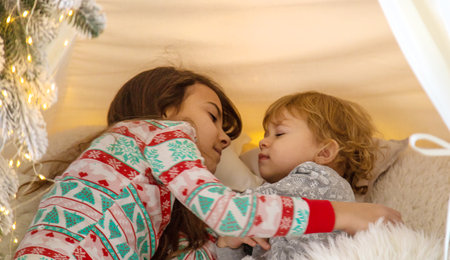1. Understanding the British Weather: What to Expect Throughout the Year
For families raising little ones in the UK, being prepared for unpredictable weather is a year-round parenting skill. Unlike many places with clear-cut seasons, Britain’s climate is famously changeable, often offering a blend of sunshine, showers, and brisk winds – sometimes all in one day! This unique weather pattern shapes not only our daily routines but also how we choose clothing for our babies, ensuring they are comfortable, safe, and able to explore their world whatever the forecast.
The Four Seasons: A Quick Overview
| Season | Typical Weather | Clothing Considerations for Babies |
|---|---|---|
| Spring (March-May) | Mild, wet, sudden chills or warm spells | Layering is key; lightweight jackets and cardigans recommended |
| Summer (June-August) | Warm spells, frequent rain showers | Cotton vests, sun hats, light raincoats for unexpected downpours |
| Autumn (September-November) | Cooler temperatures, breezy days, persistent drizzle | Knitwear, waterproofs, cosy socks and booties |
| Winter (December-February) | Cold snaps, frost, occasional snow | Padded pram suits, woolly hats, mittens, thermal layers |
The British Climate’s Impact on Baby Clothing Choices
This ever-shifting climate means British parents must keep a versatile wardrobe for their babies. It’s not uncommon to leave the house with a sunhat and sunglasses in your nappy bag alongside a raincoat and wellies! By understanding these seasonal patterns and planning ahead with practical yet cosy clothing options, you can ensure your baby stays snug and content through every British drizzle or frosty morning.
2. The Layering Approach: Keeping Your Baby Comfortable and Safe
Mastering the art of layering is essential for UK parents who want to keep their babies snug, safe, and happy all year round. With Britain’s famously unpredictable weather—where a sunny morning can quickly turn into a chilly, drizzly afternoon—the ability to add or remove clothing layers ensures your baby remains comfortable, whatever the forecast. Layering not only helps regulate your little one’s body temperature but also nurtures their sense of security, mirroring the gentle transitions they experience in their environment.
Why Layering Matters in the UK
The British climate is a patchwork of micro-seasons: springtime showers, breezy summer evenings, blustery autumn winds, and crisp winter mornings. Babies are especially sensitive to temperature changes as their bodies are still learning how to self-regulate warmth. Layered clothing allows you to respond quickly—adding an extra vest when there’s a sudden chill or removing a cardigan when the sun peeks out from behind the clouds. This flexibility supports your baby’s physical comfort while nurturing emotional reassurance through attentive care.
Basic Layers Explained
| Layer | Description | Typical Garments |
|---|---|---|
| Base Layer | Sits directly against skin; wicks moisture and keeps baby dry | Cotton bodysuits, vests, long-sleeve onesies |
| Middle Layer | Provides insulation; easy to add or remove as needed | Light jumpers, cardigans, sleepsuits |
| Outer Layer | Shields from wind, rain, or cold temperatures | Knitwear, pramsuits, waterproof jackets |
Top Tips for Effective Layering
- Choose breathable fabrics like cotton and bamboo to prevent overheating.
- Avoid bulky layers that restrict movement or make it difficult for your baby to explore.
- Check your baby’s neck or back regularly—if they feel hot or sweaty, remove a layer; if cool to the touch, add one.
This thoughtful approach not only protects your baby from the elements but also strengthens your bond through responsive care. By tuning in to both the weather and your child’s cues, you create an environment where they feel secure and understood—a foundation for healthy emotional development all year long.
![]()
3. Essential Baby Clothing for Summer Showers
The British summer is known for its unpredictable blend of sunshine and sudden showers, making it essential for parents to dress their little ones in clothing that offers both comfort and practicality. Choosing the right fabrics and layers can help babies stay cool during warm spells while keeping them dry when the rain arrives unexpectedly. Understanding these needs not only supports your babys physical wellbeing but also helps nurture a sense of security as they explore the world, no matter the weather.
Breathable Fabrics: Keeping Cool and Comfortable
When selecting summer clothing, focus on natural, breathable fabrics like organic cotton, bamboo, or lightweight muslin. These materials allow air to circulate, reducing the risk of overheating and skin irritation. Babies are sensitive to temperature changes, so soft, airy fabrics help regulate their body heat during active play or while napping in the pram.
Recommended Summer Fabrics
| Fabric Type | Benefits |
|---|---|
| Organic Cotton | Gentle on skin, highly breathable, easy to wash |
| Bamboo | Moisture-wicking, naturally hypoallergenic, soft texture |
| Muslin | Lightweight, quick-drying, ideal for layering |
Layering for Unpredictable Weather
British summers can shift from sunny to chilly within hours. Dressing your baby in lightweight layers allows you to add or remove clothing as needed. Think short-sleeved vests under long-sleeved tops or cardigans, paired with soft leggings or trousers. This approach not only ensures your child remains comfortable but also fosters a mindful routine where you respond sensitively to their changing needs—a key aspect of positive parent-child interaction.
Practical Waterproofs: Ready for Rainy Adventures
No summer wardrobe is complete without practical waterproofs. Look for baby rain jackets with taped seams, elasticated cuffs, and hoods designed to keep water out without restricting movement. Waterproof dungarees or all-in-ones offer full protection for puddle-jumping fun—an important part of sensory exploration and joyful outdoor play. Quick-drying materials mean less fuss when you’re on the go.
Quick Checklist: Summer Shower Essentials
| Item | Why It’s Essential |
|---|---|
| Lightweight Vest | Base layer for temperature control |
| Cotton Cardigan | Easy extra warmth on cooler days |
| Waterproof Jacket | Keeps baby dry during showers |
| Bamboo Sleepsuit | Cools baby at night; gentle on skin |
Dressing your baby thoughtfully for British summer showers not only keeps them physically comfortable but also encourages a secure attachment through responsive care—helping them grow with confidence in every season.
Cosy Autumn and Winter Wardrobe Staples
As the UK transitions from crisp autumn breezes to wintry chills, keeping your baby warm and snug becomes a top priority. British weather is famously unpredictable, so layering is key to adapting to sudden temperature drops. Here’s a handy guide to essential baby garments that blend comfort, warmth, and classic British style for the colder months:
Must-Have Garments for Chilly Days
| Wardrobe Staple | Purpose | British Style Tip |
|---|---|---|
| Thermal Vests | Adds an extra layer of warmth under everyday outfits. | Choose cotton-rich fabrics with subtle prints or soft pastels for a timeless look. |
| Knitted Hats | Keeps tiny heads warm while preventing heat loss. | Select hand-knitted or cable-knit styles—think classic Fair Isle patterns or pom-pom details. |
| All-in-One Pramsuits | Perfect for outdoor walks in prams, providing full-body insulation. | Look for fleece-lined or waterproof versions in neutral tones or traditional tartans. |
| Mittens & Booties | Protect delicate fingers and toes from the cold. | Opt for matching sets in soft wool blends for a coordinated finish. |
The Art of Layering
Layering is not just practical; it’s also an opportunity to showcase adorable British-inspired ensembles. Start with a thermal vest as a base, add a long-sleeved top or sleepsuit, then top with a chunky knit cardigan or jumper. For outings, finish off with a padded pramsuit and cosy accessories. This approach ensures your little one stays comfortable both indoors and out—ready for anything from misty morning strolls to festive winter gatherings.
Practical Tips for Parents
Remember to check your baby’s temperature by feeling their tummy or back rather than hands or feet, as extremities often feel cooler. Opt for easy-fastening layers—think poppers and zips—to make changes swift when transitioning between indoor heating and bracing outdoor air. With these staples at hand, your baby can enjoy every season wrapped in warmth and quintessentially British charm.
5. Practical Tips for Outdoor Adventures
Exploring the great British outdoors with your baby is both a bonding experience and an opportunity for sensory development. Whether you’re strolling through a city park or rambling along countryside trails, being well-prepared for unpredictable UK weather ensures comfort and enjoyment for both you and your little one. Here are some practical tips for dressing your baby for outdoor adventures all year round.
Layer Up for Versatility
The key to outdoor clothing in the UK is layering. Start with a breathable cotton vest as a base, add a soft long-sleeve top, and finish with a waterproof outer layer. This approach allows you to adjust your baby’s outfit as the temperature shifts or when moving from shade to sun.
Essential Layers Table
| Layer | Spring/Summer | Autumn/Winter |
|---|---|---|
| Base | Cotton short-sleeve vest | Cotton long-sleeve bodysuit |
| Middle | Light cardigan or jumper | Fleece jumper or knitted sweater |
| Outer | Packed raincoat/windbreaker | Padded waterproof coat/snowsuit |
Footwear and Accessories Matter
Muddy paths are part of the charm of British nature walks, but they do require sensible footwear. For babies not yet walking, fleece-lined booties keep toes warm and clean. For toddlers taking their first steps, wellies with grippy soles are ideal. Don’t forget a wide-brimmed hat for sun protection in summer and a cosy beanie in winter.
Mud-Ready Checklist
- Waterproof pram cover or footmuff
- Extra pairs of socks (for those inevitable puddle splashes!)
- Mittens attached by string (so they don’t go missing)
Responding to Changeable Weather
The UK is known for its quick-changing skies—one moment sunshine, the next a chilly breeze. A lightweight blanket tucked in your pram basket can double as a wind shield or picnic mat. Always carry a compact umbrella or pop-up shelter if you plan to stop for lunch outdoors.
Sensory Opportunities for Your Baby
Dressing appropriately isn’t just about comfort; it also gives your child freedom to explore. Well-fitted layers mean your baby can reach out to touch dewy grass or kick their feet without restriction, helping them build confidence and curiosity during every outing.
6. Sustainable and Local Choices
When it comes to dressing your baby through the UKs ever-changing seasons, making thoughtful choices can have a meaningful impact. Choosing UK-made, eco-friendly baby clothing not only benefits your little one but also supports local communities and the environment. Here’s why opting for sustainable, homegrown options matters—and what you can find on the market.
Why Choose UK-Made and Eco-Friendly Baby Clothing?
Eco-conscious parents are increasingly aware of the carbon footprint associated with fast fashion, even for the smallest family members. Locally produced baby clothing reduces transport emissions and ensures higher standards for materials and labour practices. Furthermore, natural fibres like organic cotton or bamboo are gentle on sensitive skin and kinder to the environment.
The Benefits at a Glance
| Benefit | UK-Made & Eco-Friendly | Fast Fashion Imports |
|---|---|---|
| Environmental Impact | Low: Less transport, biodegradable fabrics | High: Long-distance shipping, synthetic materials |
| Quality & Safety | Strict UK regulations; hypoallergenic fabrics | Varied quality; potential chemical residues |
| Support for Local Economy | Keeps money in British communities | Profits often go overseas |
| Cultural Connection | Celebrates British style and tradition | Lacks local relevance or heritage |
Supporting Local Brands: Why It Matters
By choosing British baby clothing brands, you contribute to the livelihoods of local artisans and small businesses who prioritise ethical production. Many UK labels now offer ranges made from GOTS-certified organic cotton, recycled materials, or innovative fabrics designed for sustainability. These brands often lead the way in transparent sourcing, fair wages, and thoughtful design.
Popular UK Sustainable Baby Clothing Brands
| Brand Name | Sustainability Focus | Key Offerings |
|---|---|---|
| Mori | Bamboo & organic cotton blends; ethical factories | Bodysuits, sleepsuits, outerwear |
| Pigeon Organics | GOTS-certified organic cotton; low-impact dyes | Tops, leggings, hats & rompers |
| Lilly + Sid | Recycled fabrics; zero-waste initiatives | Dresses, dungarees, accessories |
| Baba+Boo | Reusable nappies & eco-friendly babywear | Nappies, vests, muslins & bibs |
| Toby Tiger | Sustainable prints; organic certification | T-shirts, pyjamas, baby grows |
Nurturing Connections Through Conscious Choices
Selecting sustainable and local baby clothing is more than just a trend—it’s a way to nurture your child’s wellbeing while instilling values of responsibility and care for the world around them. Each lovingly chosen vest or cardigan is a stitch in the tapestry of your family’s story—a choice that echoes through both your baby’s comfort and our collective future.


